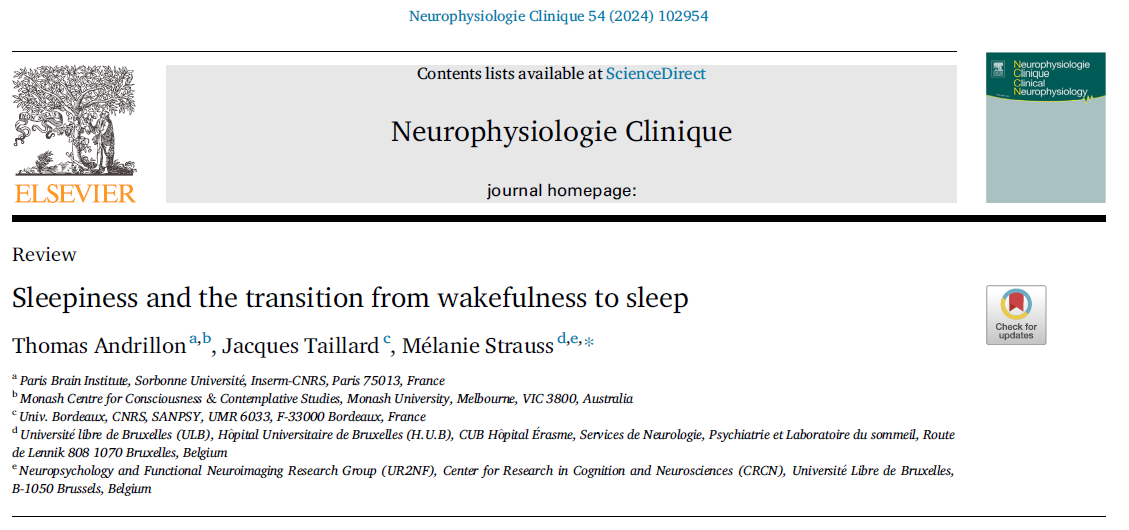Abstract
The transition from wakefulness to sleep is a progressive process that is reflected in the gradual loss of responsiveness, an alteration of cognitive functions, and a drastic shift in brain dynamics. These changes do not occur all at once. The sleep onset period (SOP) refers here to this period of transition between wakefulness and sleep. For example, although transitions of brain activity at sleep onset can occur within seconds in a given brain region, these changes occur at different time points across the brain, resulting in a SOP that can last several minutes. Likewise, the transition to sleep impacts cognitive and behavioral levels in a graded and staged fashion. It is often accompanied and preceded by a sensation of drowsiness and the subjective feeling of a need for sleep, also associated with specific physiological and behavioral signatures. To better characterize fluctuations in vigilance and the SOP, a multidimensional approach is thus warranted. Such a multidimensional approach could mitigate important limitations in the current classification of sleep, leading ultimately to better diagnoses and treatments of individuals with sleep and/or vigilance disorders. These insights could also be translated in real-life settings to either facilitate sleep onset in individuals with sleep difficulties or, on the contrary, prevent or control inappropriate sleep onsets.


